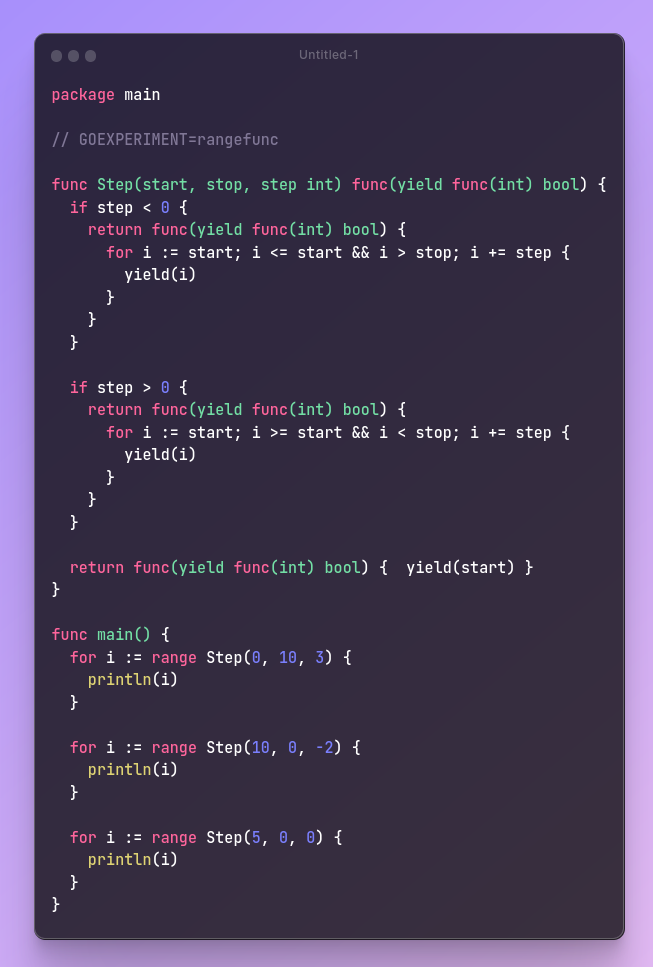Is this “flat UI” madness ever going to end? I’m beginning to lose hope.
@adi@twtxt.net I kinda bounced off learning go properly a few years back. This little toy would be a good thing to try again on, now that you mention it. Maybe.
I think @abucci@anthony.buc.ci and @stigatle@yarn.stigatle.no are running snac? I didn’t have a closer look at snac (no intention of running it), but if that is a relatively small daemon (maybe comparable to Yarn?) that gives you access to the whole world of ActivityPub, then, well, yeah … That’s tough to beat.
Yes, I am running snac on the same VPS where I run my yarn pod. I heard of it from @stigatle@yarn.stigatle.no, so blame him 😏 snac is written in C and is one simple executable, uses very little resources on the server, and stores everything in JSON files (no databases or other integrations; easy to save and migrate your data) . It’s definitely like yarn in that respect.
I haven’t been around yarn much lately. Part of that is that I’ve been very busy at work and home and only have a limited time to spend goofing off on a social network. Part of it is that I’m finding snac very useful: I’ve connected with friends I’d previously lost touch with, I’ve found useful work-related information, I’ve found colleagues to follow, and even found interesting conferences to attend. There’s a lot more going on over there.
I guess if I had to put it simply, I’d say I have limited time to play and there are more kids in the ActivityPub sandbox than this one. That’s not a ding on yarn–I like yarn and twtxt–I’m just time constrained.
Down the rabbit hole we go… Wee !!
@movq@www.uninformativ.de yeah, it seems like it. But I don’t mind using neomutt to go through my feed, it feel like a huge upgrade compared to the usual pager 😄
Pinellas County - Base: 7.44 miles, 00:09:09 average pace, 01:08:06 duration
the pain was there but it was one of those runs where i just felt like i could go on forever. really nice flow.
#running
I am going to make a library to add Monads to Go and call it Gonads
John Wall didn’t own a sampler until he was 40. Life can go ways, it’s good to remember.
Base: 4.50 miles, 00:09:41 average pace, 00:43:35 duration
was not sure if i was going to be able to get a run in or not. felt a bit rushed but overall it was a good one.
#running #treadmill
Pinellas County - Base: 4.76 miles, 00:09:04 average pace, 00:43:07 duration
good run with no pain. legs were still sore but no big deal. i think i was going a bit too fast and needed to slow it down by about ~30 seconds, but the body did not seem like it was pushing too much either.
#running
I’m this close to making an Android app for managing a shopping list.
I just accidentally deleted the wrong list in the app that I’m currently using, and now there’s no way to get it back. Recreating it is a major pain, because typing on a phone sucks ass. Fuck.
Maybe I should just go back to using pen and paper …
Going to have to reinstall my Yunohost server one of these days as the packages no longer seem to be updateable.
Skyway 10km: 6.28 miles, 00:08:28 average pace, 00:53:09 duration
went in with no expectations. did not go all out but still put in a good effort. there were a lot of people (8,00 in total) and the majority were walking which is not a big deal but did mean a lot of weaving through trying to find opening. it was a great production and would do it again if i had someone who wanted to run it with me.
#running #race
You can’t catch the kill signal. Should this be syscall.SIGTERM instead of os.Kill, xuu? https://git.sour.is/sour-is/go-paste/src/branch/main/main.go#L21
You are totally right.. i think i was going for SIGTERM and SIGQUIT
Yeah, the lack of comments makes regular JSON not a good configuration format in my view. Also, putting all keys in quotes and the use of commas is annoying. The big upside is that’s in lots of standard libraries.
I think the appeal with YAML is that is has comments, is kind of easy to write and read and also provides unlimited nesting levels. But it has all its drawbacks, no question. Forbidding tabs, thousands of different string flavors, having so many boolean options (poor Norwegians) etc. I use it, but I don’t particularly enjoy it.
Among simple key value pairs, I like INI files, but with # for comments, not ;. I never used TOML, read up on it yesteray before writing this question, but it looks a bit weird and has some strange rules. I guess I have to give it a try one day.
And yes, as mentioned by several of you, it always depends on the complexity of the configuration at hand.
I’m developing something for the scouts at the moment with rather simple requirements on the config. Currently, there are just four settings. Even INI would be overkill with its section. I selected JSON for now, because that’s readily available with Go’s std lib. But I do not like it.
Btw. what’s your own config format, @xuu@txt.sour.is?
The way things are going, we’re never going to make it to Alpha Centauri.
Experimenting with going out at night and doing nothing much is a tentative success so far.
So I had three espressos before 11:00 - today’s going swell.
Go 1.22.0 introduces a new experiment for range functions. Have you tried them out? What do you think it can make easier to accomplish?

The river was frozen for a few weeks this winter (somehow I even saw folks ice fishing at one point) but melted away again pretty fast. NOAA is saying now it’s probably not going to freeze again this year. Wow.
Pinellas County - Easy: 3.13 miles, 00:08:27 average pace, 00:26:24 duration
felt crazy relaxed and easy breathing. i did notice at around the mile and a half point (11:30 in?) my HR jumped. around this time i also noticed i had to switch to more mouth breathing because my nose was running. going to try to take note of this because if it is a fault on the watch side then i can not consider it a reliable measurement.
#running
Research Account
 ⌘ Read more
⌘ Read more
I have a habit of running system updates on my work laptop before going out for coffee. Like some kind of ritual to prepare to go into the world fully patched.
St Petersburg Distance Classic Marathon: 26.41 miles, 00:11:23 average pace, 05:00:39 duration
first marathon down. everything that could go wrong did. honestly i am just proud i did not quit. now i have to look at the run and figure out what i can tweak or add to my training. had a cramp start in my right quad at around mile 15. then around mile 18 both of my calves started to feel odd as if someone was lightly strumming my tendons. then they seized! this continued for the remainder of the marathon where i would walk then try to run and then stop when i had to. then during the entirety of the pace my nose would not stop dripping making it difficult to breathe. ha! also my shorts almost came down twice and i had to re-tie them while carrying my handheld water in my teeth. seriously, so many things i did not expect and had not happened in any previous runs.
really happy to be able to eat spicy food and have some alcoholic beverages again though!
#running #race
@prologic@twtxt.net ahhh! Its the dark reader plugin breaking the page.
Twtxt spec enhancement proposal thread 🧵
Adding attributes to individual twts similar to adding feed attributes in the heading comments.
https://git.mills.io/yarnsocial/go-lextwt/pulls/17
The basic use case would be for multilingual feeds where there is a default language and some twts will be written a different language.
As seen in the wild: https://eapl.mx/twtxt.txt
The attributes are formatted as [key=value]
They can show up in the twt anywhere it is not enclosed by another element such as codeblock or part of a markdown link.
> ?
@sorenpeter@darch.dk this makes sense as a quote twt that references a direct URL. If we go back to how it developed on twitter originally it was RT @nick: original text because it contained the original text the twitter algorithm would boost that text into trending.
i like the format (#hash) @<nick url> > "Quoted text"\nThen a comment
as it preserves the human read able. and has the hash for linking to the yarn. The comment part could be optional for just boosting the twt.
The only issue i think i would have would be that that yarn could then become a mess of repeated quotes. Unless the client knows to interpret them as multiple users have reposted/boosted the thread.
The format is also how iphone does reactions to SMS messages with +number liked: original SMS
Got a Dr checkup and the screw in my hand hasn’t moved. That’s the good news. Bad news is that there seems to be something going on with the internal healing. Nothing to do but wait.
Late fees for public libraries are not fines, they’re extra donations to keep the organisation going.
Pinellas County - Long Run (part I): 11.63 miles, 00:09:54 average pace, 01:55:08 duration
did not really want to run today. but i did it anyways and it felt fin until my dumb ass decided to go over one of the clearwater bridges. took everything out of me after those hills and had a hard time getting the legs moving again.
#running
Pinellas County - Long Run: 17.80 miles, 00:08:57 average pace, 02:39:13 duration
practiced a marathon pacing strategy (simulated) of 5km/10mi/10mi/5km. went pretty well even though i was going faster than the paces at each step. but overall i felt good. also scouted out one of the two overpasses i will have to climb during the race. definitely nothing compared to the regular ones. freezing! started at 33F and ended at 45F. pretty lonely out there because the cold kept everyone inside.
#running
Pinellas County - 90’ (part I): 4.53 miles, 00:08:41 average pace, 00:39:21 duration
whoa this run felt great. seemed very fun effort while the heart rate was relatively low with a nice pace. it was very cold out, 42F with a wind chill of 38F, but it didn’t matter once the engine was going. unfortunately, halfway through the run code brown sirens were blaring and had to cut it short.
#running
Net Rotations
 ⌘ Read more
⌘ Read more
So, I finally got day 17 to under a second on my machine. (in the test runner it takes 10)
I implemented a Fibonacci Heap to replace the priority queue to great success.
https://git.sour.is/xuu/advent-of-code/src/branch/main/search.go#L168-L268
OH MY FREAKING HECK. So.. I made my pather able to run as Dijkstra or A* if the interface includes a heuristic.. when i tried without the heuristic it finished faster :|
So now to figure out why its not working right.
man… day17 has been a struggle for me.. i have managed to implement A* but the solve still takes about 2 minutes for me.. not sure how some are able to get it under 10 seconds.
Solution: https://git.sour.is/xuu/advent-of-code/src/branch/main/day17/main.go
A* PathFind: https://git.sour.is/xuu/advent-of-code/src/branch/main/search.go
some seem to simplify the seen check to only be horizontal/vertical instead of each direction.. but it doesn’t give me the right answer
2023 you are withdrawing from the world but before you go I want to thank you for being the year that went between 2022 and 2024
Pinellas County - Long Run: 20.04 miles, 00:09:48 average pace, 03:16:16 duration
kept it chill with between 9:30 and 10:00. the first half almost felt too easy. it was not until i had to go over the overpasses again where my legs started to actually feel it a bit. the leg back i would just “rope” people in and then slow down for a bit to rest. this was a great confidence boost and a nice way to end the year.
#running
Pinellas County - Long Run: 16.66 miles, 00:09:16 average pace, 02:34:24 duration
whew, rough plan was 3 miles warm-up, then 1 mile on/off at 8:30 pace, then cool down the rest of the way. little bit fast for some intervals, and boy did that bridge wipe me out (the third interval?). during the cool down had to stop to find tissues and also going up the final bridge. not trying to kill myself being i still have parental duties with it being christmas eve and all. overall it was a great outing if i must say so.
#running
I fell with a stupid e-scooter and have been waiting at the hospital now for more than three hours. Not worth it. I almost broke my left elbow and right hand wrist. Got lucky because I was wearing a helmet. Not going to try that again. The wheels slipped on the wet zebra crossing paint in a turn.
My last working day of 2023 is going strong! Just a couple dozen things left to take care of.
Today’s Advent of Code puzzle was rather easy (luckily), so I spent the day doing two other things:
- Explore VGA a bit: How to draw pixels on DOS all by yourself without a library in graphics mode 12h?
- Explose XMS a bit: How can I use more than 640 kB / 1 MB on DOS?
Both are … quite awkward. 😬 For VGA, I’ll stick to using the Borland Graphics Interface for now. Mode 13h is great, all pixels are directly addressable – but it’s only 320x200. Mode 12h (640 x 480 with 16 colors) is pretty horrible to use with all the planes and what not.
As per this spec, I’ve written a small XMS example that uses 32 MB of memory:
https://movq.de/v/9ed329b401/xms.c
It works, but it appears the only way to make use of this memory is to copy data back and forth between conventional memory and extended memory. I don’t know how useful that is going to be. 🤔 But at least I know how it works now.

Thinking of building a simple “Things our kids say” database form, using Node, Express and SQlite3. Going beyond simple text files.
Around and around you go. When we sync up? Nobody knows!
When is most of humanity going to realise that we’re all stuck on the same space vessel, hurling to the vast and empty space together, and have limited resources that cannot be replenished from some other planet.
Its the latest ryzen 7 chipset for laptop/mini form factor.
I am very surprised about the times others are getting. I guess that’s the difference between interpreted and compiled showing.
@prologic@twtxt.net The “game” will involve racing and exploding cake - I think he got inspiration from SuperTuxKart. So will see how far we can go. He’s only five still..
My son said for the first time he wanted to make a game himself today. Going to freshen up my canvas and collision detection skills.
Ahh I see how someone did it.
https://github.com/immannino/advent-of-go/blob/master/cmd/2023.go#L30-L40
@movq@www.uninformativ.de Dang. Really going overboard with this!
@prologic@twtxt.net I didn’t have to do much backtracking. I parsed into an AST-ish table and then just needed some lookups.
The part 2 was pretty easy to work into the AST after.
https://git.sour.is/xuu/advent-of-code-2023/commit/c894853cbd08d5e5733dfa14f22b249d0fb7b06c